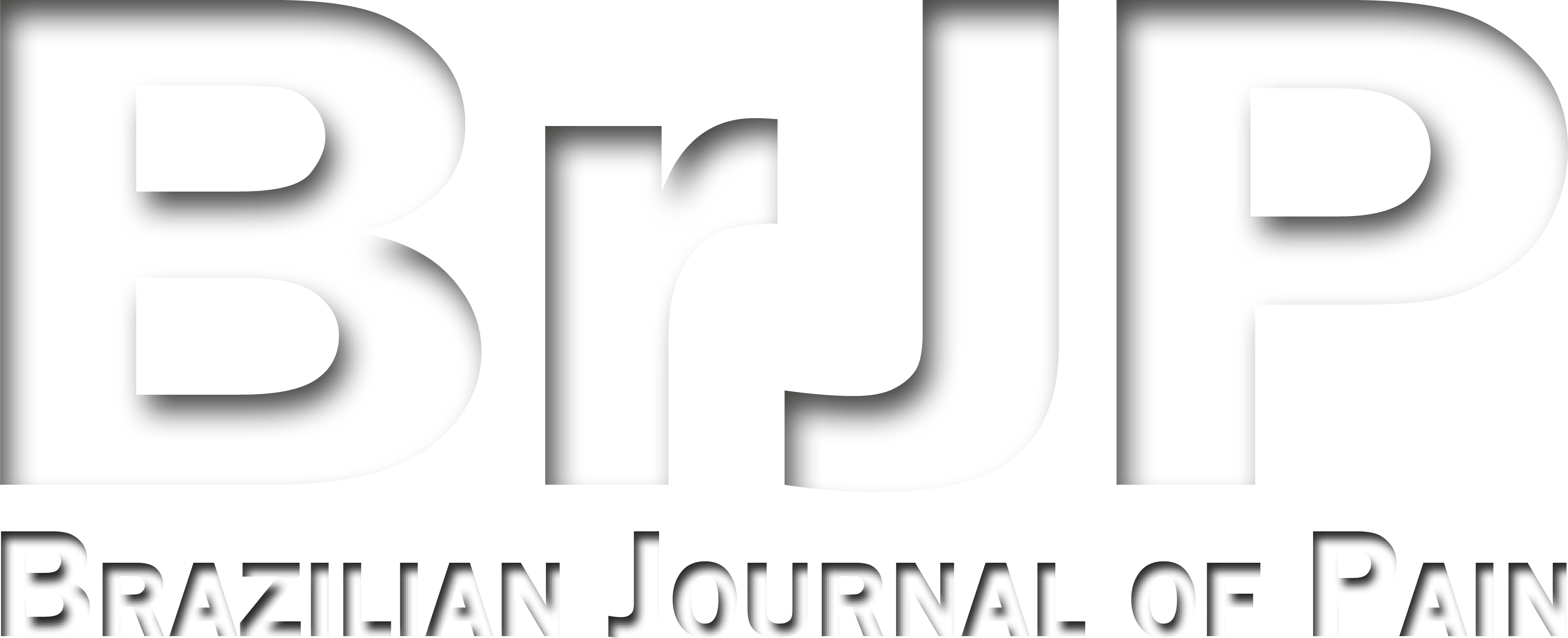Self-reported musculoskeletal disorders by the nursing team in a university hospital
Distúrbios musculoesqueléticos autorreferidos na equipe de enfermagem em um hospital universitário
Edilson Gonçalves Maciel Júnior; Francis Trombini-Souza; Paula Adreatta Maduro; Fabrício Olinda Souza Mesquita; Tarcísio Fulgêncio Alves da Silva
Abstract
Keywords
Resumo
Palavras-chave
Referências
Lelis CM, Battaus MR, Freitas FC, Rocha FL, Marziale MH, Robazzi ML. Distúrbios osteomusculares relacionados ao trabalho em profissionais de enfermagem: revisão integrativa da literatura. Acta Paul Enferm. 2012;25(3):477-82.
Magnago TS, de Lima AC, Prochnow A, Ceron MD, Tavares JP, Urbanetto Jde S. Intensity of musculoskeletal pain and (in) ability to work in nursing. Rev Lat Am Enfermagem. 2012;20(6):1125-33.
De Souza Magnago TS, Lisboa MT, Griep RH, Kirchhof ALC, de Azevedo Guido L. Psychosocial aspects of work and musculoskeletal disorders in nursing workers. Rev Lat Am Enfermagem. 2010;18(3):429-35.
Harcombe H, Herbison GP, McBride D, Derrett S. Musculoskeletal disorders among nurses compared with two other occupational groups. Occup Med. 2014;64(8):601-7.
Ribeiro NF, Fernandes Rde C, Solla DJ, Santos Junior AC, de Sena Junior AS. Prevalence of musculoskeletal disorders in nursing professionals. Rev Bras Epidemiol. 2012;15(2):429-38.
Vieira MV, Alcântara DS. Prevalence of chronic low back pain in nursing: a bibliographic review. Rev Amazônia. 2013;1(3):49-55.
Pinheiro FA, Tróccoli BT, Carvalho CV. Validity of the Nordic Musculoskeletal Questionnaire as morbidity measurement tool. Rev Saude Publica. 2002;36(3):307-12.
Hugue TD, Pereira Júnior AA. Prevalência de dor osteomuscular entre os funcionários administrativos da Unifebe. Rev Unifebe. 2011;1(9):1-9.
Lima DM, Araújo RC, Pitangui AC, Rizzo JA, Sarinho SW, Santos CM. Descrição da atividade física e da jornada de trabalho na qualidade de vida de profissionais de terapia intensiva: comparação entre um grande centro urbano e uma cidade do interior brasileiro. Rev Bras Ativ Fís Saúde. 2015;20(4):386-96.
Lopes JA, Longo GZ, Peres KG, Boing AF, de Arruda MP. Factors associated with insufficient physical activity: a population-based study in southern Brazil. Rev Bras Epidemiol. 2010;13(4):689-98.
Vespasiano BS, Dias R, Corrêa DA. Using the international of physical activity questionnaire (IPAQ) as a diagnostic tool in the level of physical fitness. Review in Brazil. Saúde Rev. 2012;12(32):49-54.
Garcia LM, Osti RF, Ribeiro EH, Florindo AA. Validação de dois questionários para a avaliação da atividade física em adultos. Rev Bras Ativ Fís Saúde. 2013;18(3):317-8.
Fonseca Nda R, Fernandes Rde C. Factors related to musculoskeletal disorders in nursing workers. Rev Lat Am Enfermagem. 2010;18(6):1076-83.
Tinubu BM, Mbada CE, Oyeyemi AL, Fabunmi AA. Work-related musculoskeletal disorders among nurses in Ibadan, South-west Nigeria: a cross-sectional survey. BMC Musculoskelet Disord. 2010;11:12.
Freimann T, Coggon D, Merisalu E, Animägi L, Pääsuke M. Risk factors for musculoskeletal pain amongst nurses in Estonia: a cross-sectional study. BMC Musculoskelet Disord. 2013;14:334.
Rathore FA, Attique R, Asmaa Y. Prevalence and perceptions of musculoskeletal disorders among hospital nurses in Pakistan: a cross-sectional survey. Cureus. 2017;9(1).
Moreira RF, Sato TO, Foltran FA, Silva LC, Coury HJ. Prevalence of musculoskeletal symptoms in hospital nurse technicians and licensed practical nurses: associations with demographic factors. Braz J Phys Ther. 2014;18(4):323-33.
Smith DR, Leggat PA. Musculoskeletal disorders among rural Australian nursing students. Aust J Rural Health. 2004;12(6):241-5.
Reed LF, Battistutta D, Young J, Newman B. Prevalence and risk factors for foot and ankle musculoskeletal disorders experienced by nurses. BMC Musculoskelet Disord. 2014;15:196.
Correa LQ, Rombaldi AJ, Silva MC. Physical activity level and self-reported musculoskeletal pain perception among older males. Rev Dor. 2016;17(3):183-7.
Sundstrup E, Jakobsen MD, Brandt M, Jay K, Aagaard P, Andersen LL. Strength training improves fatigue resistance and self-rated health in workers with chronic pain: a randomized controlled trial. Biomed Res Int. 2016;2016.
Sundstrup E, Jakobsen MD, Andersen CH, Jay K, Persson R, Aagaard P. Effect of two contrasting interventions on upper limb chronic pain and disability: a randomized controlled trial. Pain Physician. 2014;17(2):145-54.
Andersen LL, Jakobsen MD, Pedersen MT, Mortensen OS, Sjøgaard G, Zebis MK. Effect of specific resistance training on forearm pain and work disability in industrial technicians: cluster randomised controlled Trial. BMJ Open. 2012;2(1).
Freitas DA, Guedes MB, Fonseca SF, Amorim MR, Gomes WF, Melo GE. Efeito de um programa de treinamento aeróbio na dor, desempenho físico e funcional e na resposta inflamatória em idosos com osteoartrite de joelho-resultados preliminares. Rev Ter Man. 2012;10(47):52-9.
Dobson JL, McMillan J, Li L. Benefits of exercise intervention in reducing neuropathic pain. Front Cell Neurosci. 2014;8(1):102.
Fernandes GS, Bhattacharya A, McWilliams DF, Ingham SL, Doherty M, Zhang W. Risk prediction model for knee pain in the Nottingham community: a Bayesian modelling approach. Arthritis Res Ther. 2017;19(1):59.
Submetido em:
22/10/2018
Aceito em:
21/03/2019


